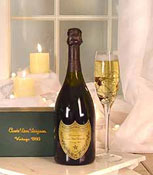

|
Champagne corks are one of the most common holiday-related hazards to the eyes. So make sure you know the right way to open a bottle of bubbly. Here are some tips:
By following these few simple safety tips, you can make sure your holidays are festive and injury free. Happy Holidays! The Academy is the world’s largest association of eye physicians and surgeons - Eye M.D.s - with more than 27,000 members. For more information about eye health care, visit the Academy’s partner Web site, the Medem Network, at www.medem.com/eyemd. To find an Eye M.D. in your area, visit the Academy’s Web site at www.aao.org. EATING CHICKEN MAY REDUCE RISK OF COLON CANCER A recent study in The American Journal of Gastroenterology revealed that patterns in diet may effect the development of colorectal adenomas, or precancerous polyps of the colon. In this study, over 1500 patients underwent baseline colonoscopy to remove existing polyps. They were then given a survey about their diet. After a period of one and then four years later, the group underwent follow-up colonoscopies to determine if any polyps had returned. Those who had consumed diets higher in processed meats showed a greater risk of developing recurrent colorectal adenomas. Those with diets high in certain white meats, like chicken, were less prone to this risk. “Our results are consistent with prior studies that suggest certain dietary factors may be important in the development of colon polyps and cancer," states Douglas Robertson, lead researcher of the study and Chief of the Section of Gastroenterology at the VA Medical Center in White River Junction, Vermont. Previous studies have explored whether fiber intake effects the growth and development of colorectal adenomas and cancer, however, this study found no significant evidence to suggest an association. The same was determined for dietary intake of fat and red meat. According to the National Cancer Institute and U.S. National Institutes of Health, colorectal cancer is the third most common type of non-skin cancer in men (after prostate cancer and lung cancer) and in women (after breast cancer and lung cancer). It is the second leading cause of cancer death in the United States with more than 57,000 people dying from colorectal cancer each year.
|
© 2008 Bonnie Carroll, All Rights Reserved

